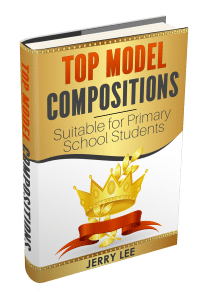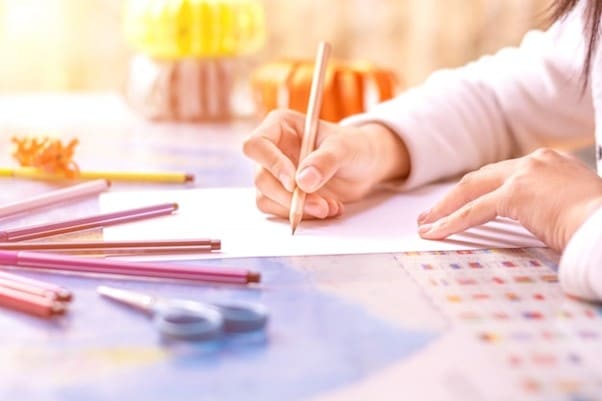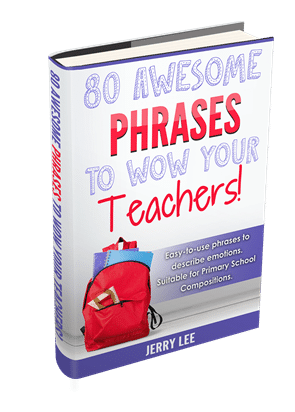- Professional development
- Knowing the subject

First steps in essay writing for primary school students
It is often difficult to get young learners closer to understanding the main purpose and development of an opinion essay.

Posted by Karina Castro
This resource could become an easy starting point to help them generate ideas and produce consistent lines. A good source of inspiration is essential for this kind of task. A couple of months ago I found an essay in pictures by Neil Gaiman published in The Guardian. It is part of Gaiman’s larger work Art Matters, and of public access. It explains the importance of reading, libraries preservation and daydreaming.
https://www.theguardian.com/books/gallery/2018/sep/06/neil-gaiman-and-chris-riddell-on-why-we-need-libraries-an-essay-in-pictures?CMP=Share_iOSApp_Other
The use of this material could benefit students both by connecting them with a different kind of literature and encouraging them to write their own ideas on the topic.
1. Start by showing on your classroom screen the different parts of the essay (or print them and paste them all over the classroom). Select students to read them aloud and invite them to make comments and provide their own opinion: Do they agree? What would they add to each sentence? What other ideas would they include?
2. Encourage your students to join in groups and write down their own ideas starting by those of the author. Eg: Reading is important because…; Books are …, etc.
3. Ask students to check grammar and spelling. Help them when necessary.
4. Share their final works.
You may take notes on the board of those sentences whose contents reflect their strongest points of view and guide them to reorder them so that they have a logical connection and result in a clear statement of what they think on the issue.
Extension
After that first try, you could encourage your students to write about different topics like:
- Our environment needs our help
- Learning languages is our gate to the world
- A creative mind will always make a free person
You may use any other topic you are working with or they suggest. This time you should let them work on their own: alone, in pairs or in small groups. Make sure they can count on you during the process.
Cross-curricular - Language + Art
As the last step for this task, you could join the Art teacher, who can work with the students to illustrate each of their lines/ideas. The final result would be a real “essay in pictures” which could decórate your classroom, the school’s reception, one of the school’s corridors or, why not, become the central part of the school’s Art Display this year! Give it a try, and writing an opinion essay won’t be that tough (or boring) for your students next time!
Research and insight
Browse fascinating case studies, research papers, publications and books by researchers and ELT experts from around the world.
See our publications, research and insight

Key Tips On Writing Good Compositions For Primary School
- Primary School Composition Writing

6 Tips On How to Write a Good Composition For Primary School Students
Picture this: your child sits down to write and their ideas effortlessly flow onto the page, characters and plots coming alive right before their eyes. They’re so immersed in writing their story that the world around them seems to fade away!
Isn’t this the writing experience you want for your child?
How do we make this a reality? You’ve likely offered your child the usual advice: “Read more books”, “Write more compositions”, or “Use better phrases”.
But let’s face it—these suggestions are too vague to be truly helpful. It’s time to move beyond generalities and work smarter, not harder. We will give you six proven tips for primary school students that offer concrete techniques to elevate their composition writing. First, let us understand more about composition writing.
Primary School Compositions
Composition writing is tested in Paper 1 of the English language paper. It requires students to write a narrative essay based on a given theme and at least one of three picture prompts. The length of the essay is 150 words for P5 and P6 students (and lower for P1 to P4 students).
Students are assessed on two components: Content and Language. To score well for the former, students need to demonstrate creative, logical and relevant ideas that align with the topic. Language, on the other hand, focuses on more technical aspects such as grammar, punctuation and spelling. A well-written composition will present clear and coherent ideas expressed in an appropriately creative manner.
But before you read this post… you might want to download this ebook first.
More than 18,725 parents have downloaded this ebook for their children. A compilation of some of the best compositions from our students.

- Common Test / Exam Compo Topics
- Strong Intros
- Descriptive Scenes
- Impactful Endings
- Powerful Vocabulary
1. Study the theme
Most picture compositions are composed of:
- Introduction
- Conflict / Problem
These four connect with one another to create a singular theme. It gives direction and purpose to the story to make it easy and enjoyable. When bringing out the central idea, it’s important to identify the keywords. For this, advise your child to look at the title.
Determine the Type of Composition
When it comes to the title, there can be three types of compositions :
- Positive (e.g. A Memorable Event, An Achievement)
- Negative (e.g. A Disappointment, A Bad Decision)
- Neutral (e.g. A Competition, A Promise)
Get your child to read the theme carefully and identify the keywords. They could help your child figure out the type of composition they have to write.
A) Positive Composition Type
Positive composition types refer to – as the name suggests – a happy or an uplifting theme. Topics that fall under this umbrella include “A Celebration”, “A Success” and “A Pleasant Surprise” to name a few. Writing these type of composition can seem deceptively easy at first. However, the challenge lies in successfully incorporating a problem element in the story while staying true to the theme.
B) Negative Composition Type
Negative composition types include topics such as ‘Making a Mistake’, ‘Something That Was Damaged’, ‘A Disagreement’ and ‘Being Anxious’. Such compositions feature unfavourable circumstances and detail how the protagonist navigates these challenges. The overemphasis on negative composition types in the past means that students may struggle to come up with fresh takes and instead, stick to overused plot ideas.
C) Neutral Composition Type
Finally, the neutral composition type arguably provides the most room for creativity and nuance. This category encompasses prompts like “Something Unexpected”, “A Long Wait”, “Being Curious” and “An Adventure”. Although this allows for students to come up with novel ideas, care must be taken not to write out of topic.
Encourage them to categorise their compo question as well. This can help because sometimes, children may make the mistake of writing an accident as “A Memorable Event”.

Yeah, no injury is worth remembering, since you probably won’t consider an incident that got you hurt as special.
2. Analyse/choose the pictures for your composition
A very common mistake is that children follow the topic… but they forgot to use any of the three pictures! This can prove fatal to their final marks because if none of the pictures are used, it’s an automatic fail in Content, which comprises half the marks in the picture composition.
There are many possible plots just from one theme. However, always ensure that your child chooses at least one of the pictures and incorporates it into the story. Make sure there is some focus of the object in the story. Otherwise, your child probably won’t score very high in Content.
Of course, your child might have trouble deciding what picture to use. To help your child’s decision, let’s take a look at last year’s PSLE’s Picture Composition as an example.

One thing your child should consider is their current vocab. Ask them, “If you were to select this picture, do you have the necessary words and phrases to effectively describe it?”
For example, some may find it easier to use the first picture and use it as the primary focus of their story, because they might know a variety of words for anger (e.g. furious, livid). Your child should keep this in mind when choosing the picture since it gives them a writing advantage.
Whether you are writing a picture composition for primary 3,4,5 or 6…You may ask, “Should my child always avoid a picture because they don’t have the vocabulary/good phrases for it?”
The answer is: No.
What this means is your child should take this chance to expand their vocabulary, so that they could write for a broader range of topics. Moreover, you never know when the pictures might come up again, albeit for a different theme.
3. Plan the Composition

Ever heard of, “If you fail to plan, you plan to fail?” Your child should always plan for their picture compositions. While there is nothing wrong with writing on the fly, it is risky for less experienced writers. They may come face to face with the following problems:
- Sudden transitions: What happened between two sentences remain a mystery. (e.g. I chased the thief. I caught him)
- Change of pronouns: This happens when students decide to write from a third-person perspective and then switch to a first-person halfway, or vice-versa.
- Writing a meaningless introduction: If the composition is about A Bad Decision, your child should not describe trivial things like the weather.
- Lack of closure/weak ending: Your child may find themselves stuck in trying to solve the conflict they came up with or end the story.
Ask your child to pen down any ideas that come into their mind when they brainstorm for the topic.
Get them to lay out the following:
- The characters & the roles they play in the story
- The main problem
- The resolution.
Think of the story as climbing a hill, getting to the top, and coming down it. From there, your child should order the points like this:

Most importantly, make sure the essay is realistic!
Even though you and I wish it was possible, if someone got into a car accident, there is no way a doctor would just put plaster and send them home.
4. How to start the composition
Your child has planned their story, but now the blank page looms before them. Here’s the challenge: how to begin?
The introduction sets the tone, engages the reader and determines whether they’ll keep reading. It’s a chance to make a lasting first impression. Rather than relying on cliched openings like “Ring! Ring! The bell rang” or memorised “model” introductions, your child should aim to hook the reader from the very first sentence.
Let’s explore five effective ways to begin a story with impact.
A) Start with a Flashback
The flashback technique uses an object or event in the present to trigger a memory, transporting the reader to the past where your main story unfolds.
To craft an effective flashback introduction:
- Set the scene : Establish your main character’s current location and activity.
- Describe the trigger: Use your five senses to describe the object/ event that sparks the memory.
- Show the reaction: Convey your character’s feelings and thoughts towards the trigger.
- Transition to the past: Bridge the gap between present and past with a sentence
Check out this example of a flashback introduction:
The kitchen floor was a mess—utensils, pots and pans, and faded recipe books were scattered everywhere. Tommy sighed. His little sister had once again turned the kitchen into her personal playground! Tommy was cleaning up the mess when he noticed an old photograph peeking out from a stack of recipe cards. It was a picture of five-year-old him in a Superman cape standing proudly next to his grandmother, whose face was creased with laughter. Tommy’s heart skipped a beat, and a nostalgic feeling washed over him as he traced his fingers over his grandmother’s face. He took a deep breath, and for a moment, the smell of his grandmother’s apple pies seemed to fill the room, transporting him right back to her kitchen …
See how we incorporated the four steps to create the flashback intro? Do remind your child to “snap” back to the present in the conclusion to provide closure to the story.

B) Start with Dialogue
Starting a composition with dialogue is a simple way to immediately draw the reader into the scene. This technique is suitable for any topic and accessible to writers of all skill levels.
To use this technique effectively, your child should pay attention to not only the words spoken, but also the dialogue tags used. These tags are crucial—they reflect the emotion with which the words are spoken and, therefore, provide additional context.
For example, for the PSLE question “A Long Wait”, your child may start with a line like this:
“I’ve been waiting for ages!” Caleb grumbled, drumming his fingers on the sticky restaurant table. The buzz of the crowded restaurant only added to his frustration as he watched the waiter pass by yet again without a glance.
The dialogue tag “grumbled” clearly conveys the speaker’s frustration while the action drumming his fingers on the table suggests a sense of growing impatience.
However, not all dialogue openings are equally effective. Consider this weak example:
“We’re here!” I said as we arrived at the park.
Avoid vague or mundane statements that don’t add value to the story. Instead, try:
“I can’t believe we’re finally at Disneyland!” I squealed, my eyes widening at the sight of the iconic castle.
The stronger version clearly shows the character’s excitement, introduces the specific setting, and creates a vivid image in the reader’s mind.
As you can see, starting with dialogue is a great way to introduce your protagonist but that isn’t the only way…
C) Start with Character Thought
Character thoughts can be useful compo openers too.
Picture this: your character is in a situation where they can’t speak their mind. Maybe they’re in a quiet library, or perhaps expressing themselves would be just too risky. That’s where internal dialogue or thoughts come in; they have the same punch but with an extra dash of intimacy!
Let’s see this technique in action:
“This is it. After months of gruelling rehearsals, I’m finally here. I must not mess this up,” I told myself, plastering on a confident smile as I strode onto the stage.
In addition to setting the context, this opening captures the performer’s inner turmoil while showing their outward confidence . It is this contrast between the internal and external states that makes thought-based openings so powerful.
Let’s try another one:
If I don’t pass this exam, my parents will kill me, I thought as Mr. Lee returned the exam scripts.
This thought immediately establishes the high-stakes situation. It’s more effective than dialogue because it reveals a fear the character likely wouldn’t voice aloud in a classroom setting.

Vector 3d realistic illustration of open movie clapperboard or clapper isolated on background. Black cinema slate board, device used in filmmaking and video production. Film industry equipment
D) Start with Action
Lights, camera, action!
Start with Action means starting with a scene in the climax or nearing the climax of the story. This plunges the reader directly into excitement and action, which keeps them on the edge of their seats from. the very first sentence! This technique is particularly effective for compositions with a negative theme such as “An Accident” or “A Close Shave, which tend to be action-packed and fast-paced.
Let’s dive into an example:
The icy wind lashed at my face as I desperately clung to the edge of the cliff. “Hold on!” Jake shouted, straining to reach my outstretched hand. Below, the angry waves crashed against razor-sharp rocks. Is this my end? I wondered, panic rising as my grip weakened by the second.
Talk about a cliffhanger! Did you feel the excitement? Let’s break it down:
- Immediate conflict: From the very first sentence, we know the character is in danger, creating instant suspense. (Note that emotional confrontations can be equally tension-filled!)
- Powerful verbs: Words like “lashed” and “crashed” ramp up the danger.
- Curiosity hook: Why are they on a cliff? Who’s Jake? What happens next?
After your gripping opener, you can transition to earlier events to provide context:
It all started two hours ago when…
Execution is key when it comes to this technique; you need to balance excitement with clarity. After all, you want your readers intrigued, not confused!

E) Start with Vivid Description
While action-packed openings are great for high-intensity stories, sometimes a more nuanced approach is needed. Starting with a vivid description works for slower-paced narratives, character-driven or rely heavily on setting.
Let’s explore how to write vivid descriptions for both characters and settings .
- Character-based Intro
Consider a composition on “Being Responsible” that must feature a hardworking character. Instead of directly stating their qualities, it’s more engaging to show them through description.
Here’s an example of a character who begins as irresponsible:
Jia Min slouched in her chair, further rumpling her wrinkled uniform. Her half-open eyes struggled to focus on the whiteboard. When will this torture end? As the teacher’s voice droned on, a soft snore escaped her slightly parted lips. Her best friend’s sharp elbow jabbed her ribs, eyes darting meaningfully towards Jia Min’s blank worksheet. Jia Min stifled a yawn, picked up her untouched pen and promptly began doodling.
This description not only captures Jia Min’s current lack of responsibility but also sets the stage for potential growth and change.
How to execute this technique well? For character-based introductions, focus on:
- Appearance : Describe physical features relevant to the story’s theme (e.g., the wrinkled uniform suggests irresponsibility).
- Behaviour and actions : Show the character’s nature through what they do (e.g., sleeping in class, doodling instead of taking notes).
- Thoughts and feelings : Provide insight into the character’s mind (e.g., Jia Min’s referring to class as torture).
This introduction shows an irresponsible character without explicitly stating it. It intrigues the reader: How will such a character become responsible by the end? The contrast sets up an interesting character arc.
- Setting-based Intro
Using vivid descriptions of a setting in the introduction can be equally effective. Even “boring” settings like parks can come to life if done right.
Check out this example:
I inhaled deeply, savouring the earthy scent of rain that lingered from an earlier downpour. The roots of a gnarly, old tree broke through the cracked path and created a natural speed bump for me during my daily evening jog. Rustle! A squirrel hurriedly scampered to a nearby tree as a group of animated aunties power-walked past me. Just then, a cool gust of wind caressed my face. Invigorated, I decided to extend my usual jog by one more lap.
This vivid description of a routine jog in the park immediately draws us into the scene, don’t you think?
To write an effective setting-based introduction, your child should focus on:
- Five senses: Engage about 2 to 3 of the five senses (Can you identify which senses we used here?)
- Details. Details.: Pay attention to specific details which make the scene “real” and not just another cookie-cutter park scene.
- Character: How does the character interact with their environment? What are their feelings, actions, and thoughts?
Each of these techniques offers a unique way to start a composition. The key is to choose the method that best suits the story and theme. A strong opening gives a good first impression, so remind your child to spend some time on crafting the intro.
Now, let’s move on to the meat of the story, where the excitement truly begins.
5. Writing the Body
Hoo, boy. This will be a long ride, so fasten your seatbelts.
The most essential part of the compo is the body, because that is where most of the action is. When it comes to the body, there are three parts to consider:
A) Rising Action (Events before the conflict)
Most of the stories you and your child might have read would always include some problem that the protagonist has to face. Without it, there would be no story, and the plot can be dry. The same goes for any picture composition.
One of the mistakes students make is to state the problem right after the introduction. This runs the risk of an underdeveloped story, which can affect their Content marks. Your child needs to learn how to write the events preceding the main problem, then describe the conflict. This is better known as the rising action.
For example, your child can describe what the character(s) did or did not do that may have caused the problem they would face as the rising action.
It does not have to be long, but it must build up the story’s tension, which would lead to the climax.
B) Climax (The main problem)
This is where the peak of the story occurs, and the turning point happens. Your child should aim to show as much action and the characters’ emotions as possible. Depending on the topic, your child may need to write one of these types of conflict:
- Internal conflict: A moral dilemma (e.g. Your best friend stole a wallet. Should you tell the teacher, or keep it to yourself?)
- External conflict (Man-made) : (e.g. a bully)
- External conflict (Natural): (e.g. a fire)
C) Resolution (Falling action)
The third part of the composition’s body is the resolution, or how the main character solves the problem. This is better known as the falling action. Unfortunately, many students would rush through by writing one or two sentences due to lacking time or ideas. This comes at the cost of a sudden transition.
A thing to note is that most resolutions, primary school kids write would involve a figure of authority to solve the conflict for them. After all, in real life, most kids would turn to the adults, such as you or their teachers, to solve the problems.
If the story involves thieves, it would always have policemen included. In the case of a fire, no doubt there would be firemen. Rarely, the main character would solve the problem themselves.
It is true that some types of compositions(e.g. A Crime You Were Involved In) would leave them little choice but to involve the adults. If that happens, your child should describe the character’s attempts to do something about the problem before help arrives.
For a better resolution, your child should ask themselves two questions:
- What could the protagonist do to solve the conflict?
- How did he/she feel when they attempted to handle the problem?
6. Writing the conclusion
Once the resolution is done, remind your child to wrap up with an ending. That is where your child is supposed to tie up the loose ends and close the story. It is essential to give the readers an ending they are satisfied with, and not keep them in suspense.
What your child can write in the conclusion:
- Character’s reflections and thoughts about the story’s events
- Their feelings over what happened
- Their concluding actions or decisions of future actions.
Regardless, it’s advised for your child to always link the ending back to the theme or topic they are writing about.
It may sound like a lot to take in, but it’s possible for your child to learn how to write a good primary school composition. Writing is like any other skill; there are no shortcuts.
Once your child masters the six tips, all your child needs is time and practice. Remember, it’s not about the speed of their progress but their persistence and joy in the journey. If they just keep writing, every page will bring them one step closer to becoming a masterful storyteller.
See more related articles on Writing Samurai:
- Common PSLE Composition Topics – How to Handle Them?
- PSLE English Composition – Marking Scheme with Pictures!
- Example Model Compositions Primary School Students
- Picture Compositions for Primary School Students
“Help! My child can’t write! How can I improve my child’s writing skills?”
For a LIMITED TIME ONLY…
Download this FREE Ebook for your child. It contains 80 Awesome Phrases to describe emotions!
More than 11,437 students have benefited from this book!
Click or Tap on button below to download!

You can check out more Free Compo Writing Resources (Model Compos, Test Papers, etc) on this page >>> Free Compo Writing Resources

Follow Writing Samurai on Telegram for the latest tips and strategies for English, Chinese, and Creative Writing! Pssst... We will also share the latest compo topics during test or exam season!
Click this link to follow our channel >>> https://t.me/writingsamurai
Using Creative Words and Phrases for Composition Writing & Essays
50 idioms your child can use for composition writing.

Writing Samurai is an online platform dedicated to nurturing children’s creative writing skills. Our courses are designed to be engaging and effective, without resorting to traditional teaching methods.
Subscribe for latest news & English tips:
Terms of Use | Privacy Policy
2024 Copyright Writing Samurai
PRIMARY ENGLISH
- Model Compositions
- Situational Writing Tips
- PSLE English Oral Exam Tips
- PSLE Chinese Oral Exam Tips
- 50 Meaningful Proverbs
- Composition Writing
- PSLE Marking Scheme

SECONDARY ENGLISH
- Past Year's O-Level Essays
- Discursive Essay Writing
- Argumentative Essay Writing
- Secondary English Writing Tips (O-Levels)
- Exam Tips for Secondary English
- 7 Exam Tips for Language Editing (O-Levels)

POPULAR TOPICS
- English Oral
- Chinese Oral
- Situational Writing
- Secondary School Writing
- Essay Writing Lower Secondary
- Synthesis & Transformation
- Calculate AL PSLE Score
- Chinese Learning Apps
TOP FREE RESOURCES
- Free English Writing Resources List
- Free Model Compositions Examples
- Video - Proverbs Composition Writing
- Video - How to Write A Powerful Introduction
- Video - How to Use Good Expressions in your Compositions
- Free Online Writing Course - Kick Start Your Writing
Top Courses
Primary english.
- Junior Writers Masterclass - P1 / P2
- Little Writers Masterclass - P3 / P4
- Creative Writing Masterclass - P5 / P6
- Chinese Composition Writing - P5 / P6
Secondary English
- Essay Writing Masterclass - S1 / S2
- Essay Writing - Expository & Argumentative Crash Course
- Grammar Editing Crash Course for Secondary School
English E-Books
- Model Composition Examples
- Free Model Compositions
TOP COURSES
